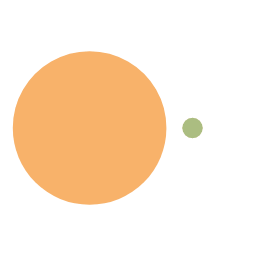这里是慕雪的小助手,这篇文章主要介绍了C++11中引入的`s
1.说明
std::choro::duration是C++11引入的一个用于计算时间滴答周期的类,与之配合使用的是std::ratio类,该类是一个分数类,为精确表示分数提供了一个方式。
2.std::ratio
我们知道,对于计算机来说,使用浮点类型是会有精度缺失的。所以std::ratio类便提供了分子和分母,
1 2 3 4 template < std::intmax_t Num, std::intmax_t Denom = 1 > class ratio;
该类的模板定义如下,Num是分子,Denom是分母。不传入分母的时候,分母默认为1。
假设我们需要表示1秒的千分之一(即一毫秒)就可以用如下方式来定义一个ratio
1 typedef ratio<1 ,1000 > milli;
代表1/1000这个分数;
cpp中自带的几个ratio
为了方便标识单位之间的差距(单位换算),cpp中预定义了一些常用的ratio
1 2 3 4 5 6 7 8 9 10 11 12 13 14 15 16 typedef ratio<1 , 1000000000000000000 > atto;typedef ratio<1 , 1000000000000000 > femto;typedef ratio<1 , 1000000000000 > pico;typedef ratio<1 , 1000000000 > nano;typedef ratio<1 , 1000000 > micro;typedef ratio<1 , 1000 > milli;typedef ratio<1 , 100 > centi;typedef ratio<1 , 10 > deci;typedef ratio< 10 , 1 > deca;typedef ratio< 100 , 1 > hecto;typedef ratio< 1000 , 1 > kilo;typedef ratio< 1000000 , 1 > mega;typedef ratio< 1000000000 , 1 > giga;typedef ratio< 1000000000000 , 1 > tera;typedef ratio< 1000000000000000 , 1 > peta;typedef ratio< 1000000000000000000 , 1 > exa;
我们可以用类作用域符号::来访问到这些比例的分子和分母。
1 2 std::cout << std::centi::num << "/" << std::centi::den << std::endl;
3.std::chrono::duration
这个类是用来表示一个时间的周期/长度的,其基于1s为基本单位,用ratio来表示和1s相比的偏移量。
在cppreference上的介绍如下
Class template std::chrono::duration represents a time interval.
该类的定义如下
1 2 3 4 template < class Rep , class Period = std::ratio<1 > > class duration;
其中Rep是一个变量类型,可以传入int、float、double等类型;
Period是一个std::ratio,可以传入基于一秒的比例,这个比例就代表了时间的单位;
cpp中自带的几个chrono
为了方便我们使用,cpp中自带了几个用于表示时间的chrono的定义
1 2 3 4 5 6 7 8 9 10 11 12 13 14 15 16 17 18 19 20 21 22 23 24 25 26 27 28 29 30 31 using nanoseconds = duration<_GLIBCXX_CHRONO_INT64_T, nano>; using microseconds = duration<_GLIBCXX_CHRONO_INT64_T, micro>; using milliseconds = duration<_GLIBCXX_CHRONO_INT64_T, milli>; using seconds = duration<_GLIBCXX_CHRONO_INT64_T>; using minutes = duration<_GLIBCXX_CHRONO_INT64_T, ratio< 60 >>; using hours = duration<_GLIBCXX_CHRONO_INT64_T, ratio<3600 >>; #if __cplusplus > 201703L using days = duration<_GLIBCXX_CHRONO_INT64_T, ratio<86400 >>; using weeks = duration<_GLIBCXX_CHRONO_INT64_T, ratio<604800 >>; using years = duration<_GLIBCXX_CHRONO_INT64_T, ratio<31556952 >>; using months = duration<_GLIBCXX_CHRONO_INT64_T, ratio<2629746 >>; #endif
代码里面出现的宏定义其实就是int64_t的别名。
1 ## define _GLIBCXX_CHRONO_INT64_T int64_t
这些变量之前在学习C++线程休眠的时候就已经遇到过了,从中也能看到std::ratio在chrono中代表的比例关系,比如一小时是3600秒,那么就需要传入比例std::ratio<3600,1>,上面的代码里面省略了1是因为ratio的分母缺省值就是1。
代码示例1
1 2 3 4 5 6 7 8 9 10 11 12 13 14 15 16 17 18 19 20 21 22 23 24 #include <iostream> #include <chrono> int main () typedef std::chrono::duration<int , std::ratio<1 , 100000000 >> shakes; typedef std::chrono::duration<int , std::centi> jiffies; typedef std::chrono::duration<float , std::ratio<12096 ,10000 >> microfortnights; typedef std::chrono::duration<float , std::ratio<3155 ,1000 >> nanocenturies; std::chrono::seconds sec (1 ) ; std::cout << "1 second is:\n" ; std::cout << std::chrono::duration_cast <shakes>(sec).count () << " shakes\n" ; std::cout << std::chrono::duration_cast <jiffies>(sec).count () << " jiffies\n" ; std::cout << std::chrono::duration_cast <microfortnights>(sec).count () << " microfortnights\n" ; std::cout << std::chrono::duration_cast <nanocenturies>(sec).count () << " nanocenturies\n" ; return 0 ; }
上面的代码示例运行结果如下
1 2 3 4 5 6 > g++ test.cpp -o test -std=c++17 && ./test 1 second is: 100000000 shakes 100 jiffies 0.82672 microfortnights 0.316957 nanocenturies
我们能看到,第一个里面传入的比例是1/100000000,这就代表1秒包含了100000000个shakes,假设我们需要一个休眠1/100000000秒的操作,就可以通过std::this_thread::sleep_for和这个shakes变量来进行精确的定时休眠。
代码示例2
让当前线程休眠100毫秒,有几种不同的方式,都是等价的。
1 2 3 4 5 6 7 8 9 10 11 12 13 #include <thread> #include <chrono> #include <iostream> int main () std::this_thread::sleep_for (std::chrono::milliseconds (100 )); std::this_thread::sleep_for (std::chrono::duration <long long , std::milli>(100 )); std::this_thread::sleep_for (std::chrono::duration<long long , std::ratio<1 , 1000 > >(100 )); }
4.std::chrono::duration_cast
为了方便在不同的时间单位之间进行转换,CPP提供了一个特殊的cast来进行处理
1 std::chrono::duration_cast <目标类型>(源类型对象);
比如可以用下面的代码将3秒转换为毫秒,注意圆括号里面的传参是源类型的一个对象,不能只传入类型(那样就不是变量类型转换了)
1 2 3 4 5 6 7 8 9 #include <chrono> #include <iostream> int main () std::chrono::milliseconds ms = std::chrono::duration_cast <std::chrono::milliseconds>(std::chrono::minutes (3 )); std::cout << "3 minutes equals to " << ms.count () << " milliseconds\n" ; }
运行结果如下
1 2 > g++ test.cpp -o test -std=c++17 && ./test 3 minutes equals to 180000 milliseconds
The end
基本要了解的内容就这些了。
参考文档



